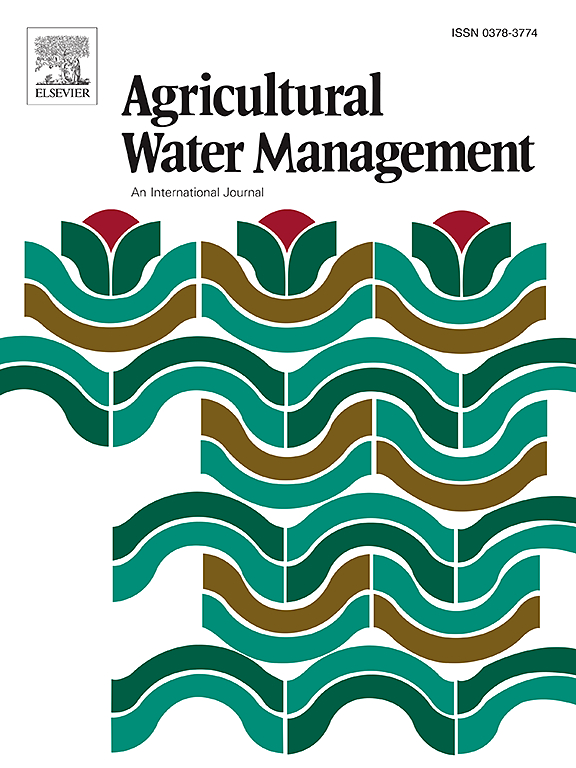该软件预测了气候变化对美国西部伊利湖流域水文、玉米产量和排水设计的影响
IF 5.9
1区 农林科学
Q1 AGRONOMY
引用次数: 0
摘要
气候变化给农业用水管理带来了挑战,需要重新评估地下排水设计,以实现可持续作物生产。研究目标为:(1)研究气候变化对美国密歇根州东南部水文和玉米产量的影响;(2)评估气候变化对浅75 cm和深125 cm两种排水深度下最佳排水间距的影响。利用排水模式和SSP2-4.5路径下9个环流模式的气候预测(2030-2059),研究预测了不同排水间距设计的水文响应和经济回报。在历史(1994-2023)和未来情景下,确定最优排水间距为经济效益最大化的排水间距。未来的预测显示,与历史相比,年气温升高(历史为9.6°C,未来为12.1°C),年降水量相对稳定(历史为933 mm,未来为928 mm),蒸散量增加(21%),排水量减少(21%),地下水位加深(7%)。干旱胁迫是未来产量下降的主要原因,两个排水孔深度平均下降25%。由于蒸散量增加和地下水位加深,预计未来生长季节的干旱天数将增加。为了缓解干旱压力,浅水渠的最佳排水间距预计从7 m扩大到11 m,深水渠的最佳排水间距预计从12 m扩大到19 m。综上所述,未来的气候条件显示产量下降,表明可能需要更宽的排水间距来缓解干旱生长季节。本文章由计算机程序翻译,如有差异,请以英文原文为准。
DRAINMOD predicted impact of climate change on hydrology, corn yield, and drainage design in the Western Lake Erie Basin, United States
Climate change presents challenges to agricultural water management, necessitating a reevaluation of subsurface drainage design for sustainable crop production. The objectives were to (1) investigate the impacts of climate change on hydrology and corn yield in southeast Michigan, United States, and (2) assess the climate change impact on the optimum drain spacings under two drain depths of 75 cm shallow and 125 cm deep. Using DRAINMOD and climate projections (2030–2059) from nine general circulation models under the SSP2–4.5 pathway, the study predicted hydrological responses and economic returns for various drain spacing designs. The optimum drain spacing was determined as the spacing that maximizes economic return using historical (1994–2023) and future scenarios. Future predictions showed an increased annual temperature (9.6°C for historical vs 12.1°C for future), relatively stable annual precipitation (933 mm for historical vs 928 mm for future), increased evapotranspiration (21%), reduced drainage discharge (21%), and deeper water table (7%) compared to the historical. Drought stress was the primary driver of future yield reductions, averaging 25% for both drain depths. The number of dry days during the growing season is expected to increase in the future due to higher evapotranspiration and a deeper water table. Optimum drain spacings were projected to widen from 7 m to 11 m for shallow drains and from 12 m to 19 m for deep drains to mitigate drought stress. In conclusion, future climate conditions showed a yield decline, suggesting a wider drain spacing may be needed to mitigate the drier growing season.
求助全文
通过发布文献求助,成功后即可免费获取论文全文。
去求助
来源期刊

Agricultural Water Management
农林科学-农艺学
CiteScore
12.10
自引率
14.90%
发文量
648
审稿时长
4.9 months
期刊介绍:
Agricultural Water Management publishes papers of international significance relating to the science, economics, and policy of agricultural water management. In all cases, manuscripts must address implications and provide insight regarding agricultural water management.
 求助内容:
求助内容: 应助结果提醒方式:
应助结果提醒方式:


